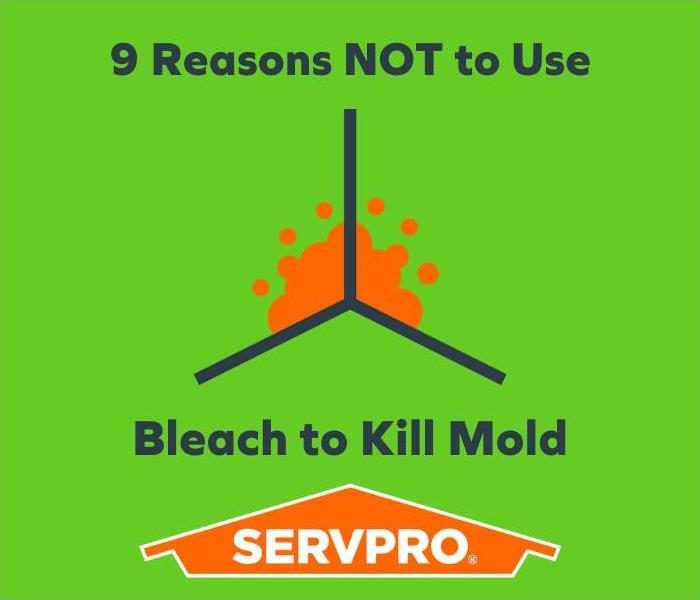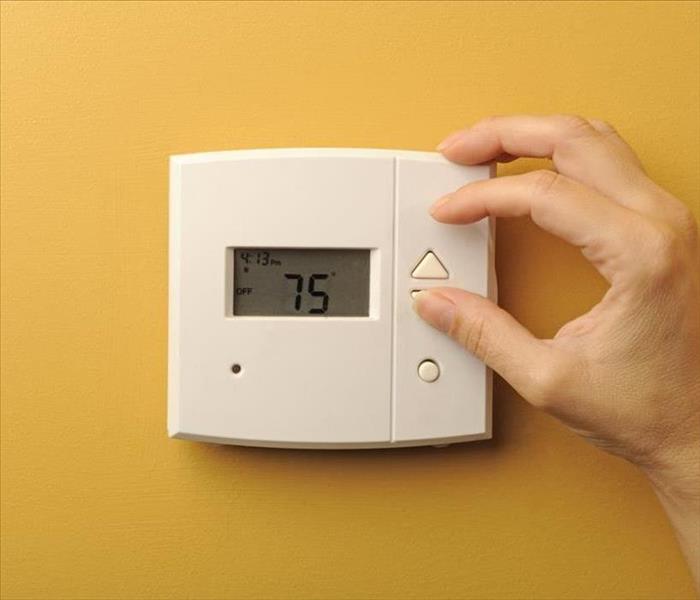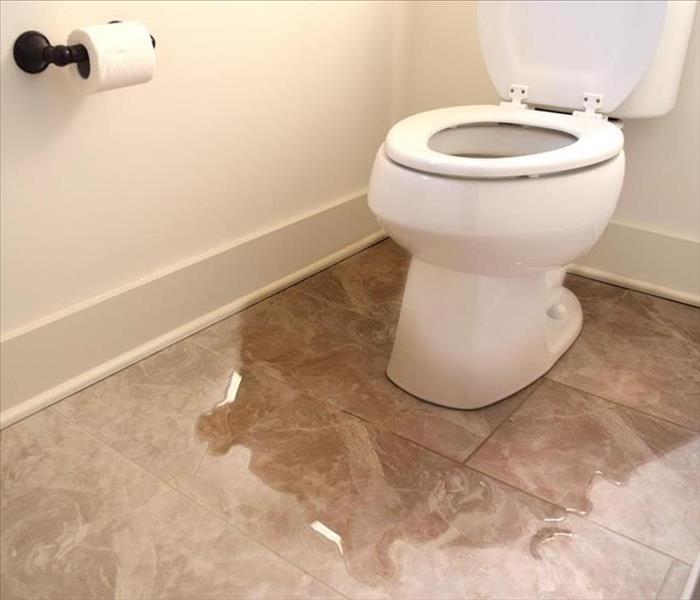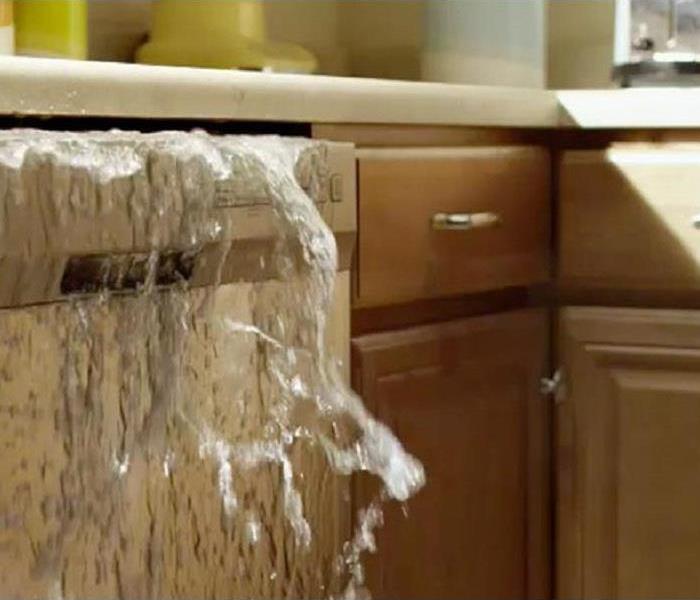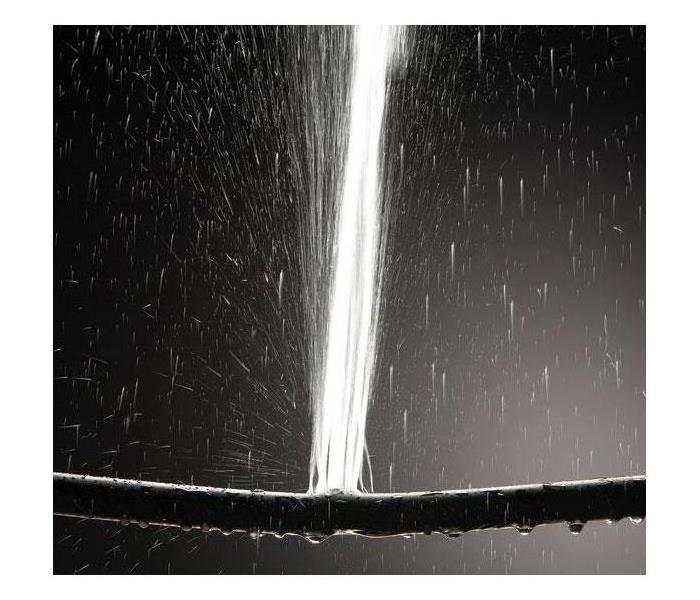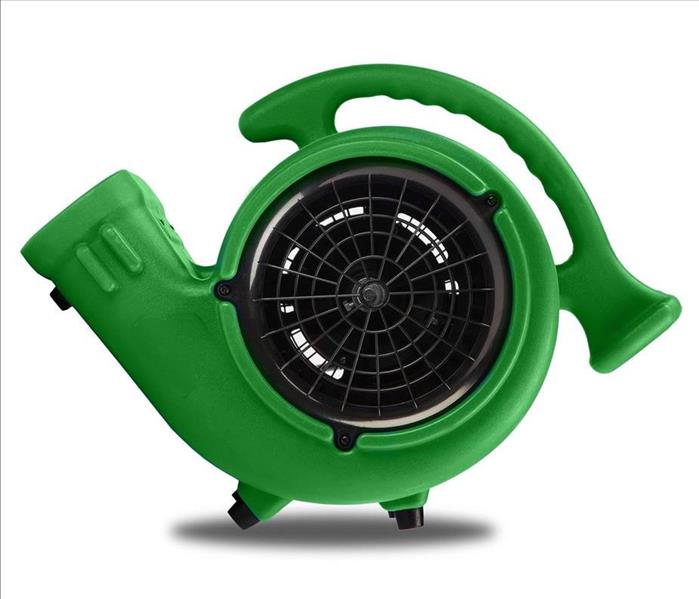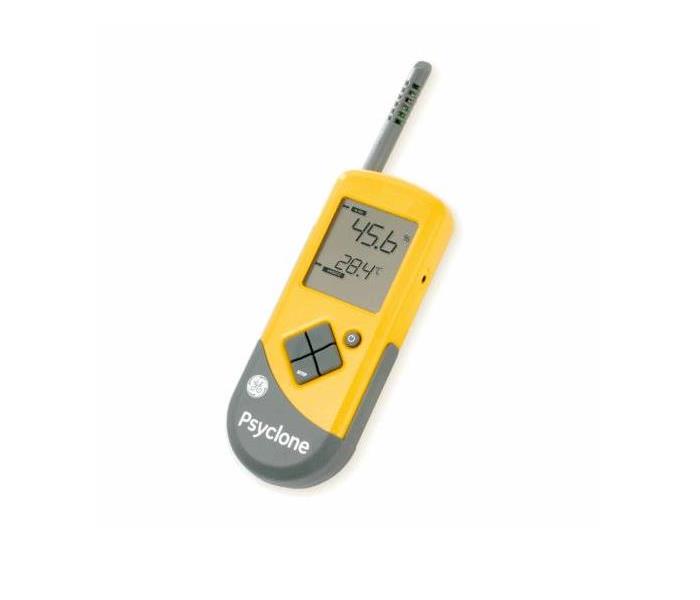Archived Water Damage Blog Posts
Importance of Water Damage Prevention
3/4/2022 (Permalink)
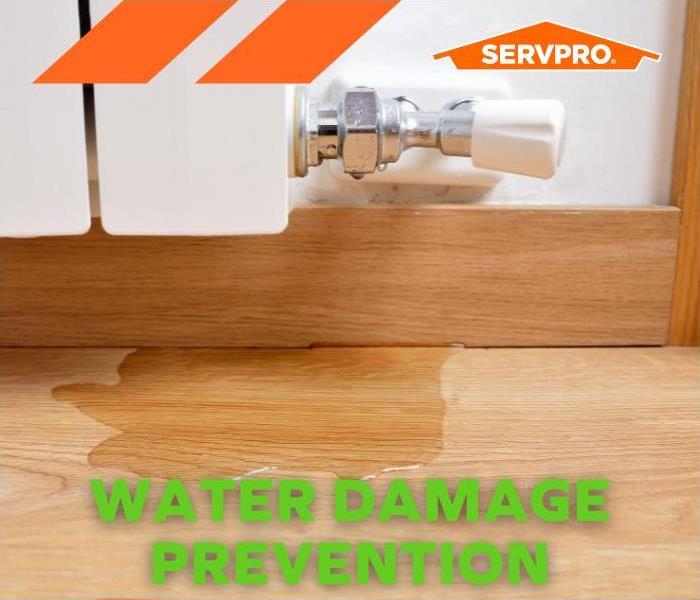 Prevention is important! It might just save you from a water damage nightmare.
Prevention is important! It might just save you from a water damage nightmare.
Water Damage usually happens when we least expect it, causing massive amounts of damage. A property owner's nightmare! But despite the sudden occurrence of water damage, preventative steps can be taken to help limit the damage.
Inspect Your Roof
A damaged roof can allow small leaks to go unnoticed until it's too late and damage has been done. Your roof is your first line of defense about rainfall and heavy storms. Check your roofs annually to ensure sealed protection.
Clean Your Gutters
Clogged & dirty gutters can backup onto your roof. This can cause wear and tear on your roof. Standing water can begin to seep into your roof and ultimately into your property.
Check Your Water Heater
Water heaters have certain lifespans, without proper maintenance a water heater can cause flooding.
Check Your Pipes
Pipes under your sinks or behind your toilet will need to be tight and secure. Note any plumbing issues that might signify a water damage issue or leak.
Check Your Appliances
Washing machines, dishwashers, & refrigerators usually all produce water. These lines can easily leak under the appliance if moved or loosened for any reason.
Prevention is important! These few steps may save you from a water damage nightmare and dealing with insurance.
When a disaster strikes, SERVPRO® is there to clean up the mess. Call SERVPRO® of Downey, Montebello, Compton, Vernon for your disaster recovery needs. From Fire and Water Damage to sanitization, we are there to assist you. Call us at: (562) 392-3007
What You Need to Know About Your Insurance Policy and Water Damage.
1/20/2022 (Permalink)
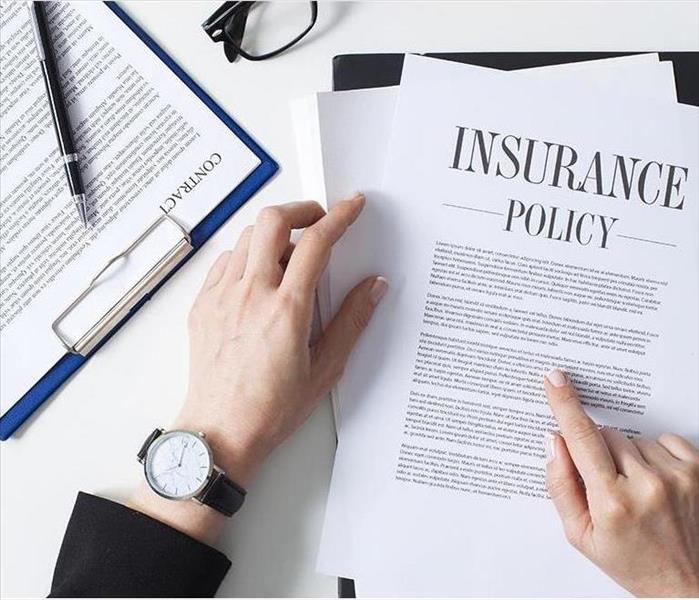 Do you know what damage your policy covers and what it doesn't?
Do you know what damage your policy covers and what it doesn't?
Should a pipe burst and send water gushing into your home, the good new is that it will almost certainly be covered by your homeowners insurance. While normally a covered peril there can, however, be some exceptions. The following are a few questions that you might have regarding your policy.
1. What Damage is Covered by My Insurance?
If you experience water damage from a broken or or even just leaky pipe, the cost of any subsequent damage will likely be covered. Check your policy for specifics, if the flood is the result of a broken pipe caused by freezing weather or a sudden accident, this will usually be included in your policy. However, you often will be required to pay for any costs related to repairing and replacing the pipe.
2. What Damage is Not Covered by My Insurance?
If the insurance company believes that the pipe has broken as a result of negligence, then you likely will be denied coverage. This could happen if you have failed to maintain your home or not taken proper precautions to prevent freezing pipes during cold weather, etc. You may also be denied if you wait too long to contact your insurance company and the damage has worsened in the meantime.
3. What Should I Do When I Discover Damage?
To prevent your insurance company from denying your claim, you need to contact them as soon as you start to notice any damage. You also should hire a professional water damage remediation company to fix both the source of the problem and any of its lasting effects, whether that be water, mold, or any other type of damage. While you wait for us to arrive, you can begin documenting any damage and/or finding any ways to prevent water from spreading.
While a flood in your home can cause a lot of worries, the claims process can go more smoothly if you take the appropriate actions. Performing regular maintenance on your home can prevent problems and will make it easier to be approved for coverage if an accident does happen.
Restoring Damage from Black Water in Your Home
12/27/2021 (Permalink)
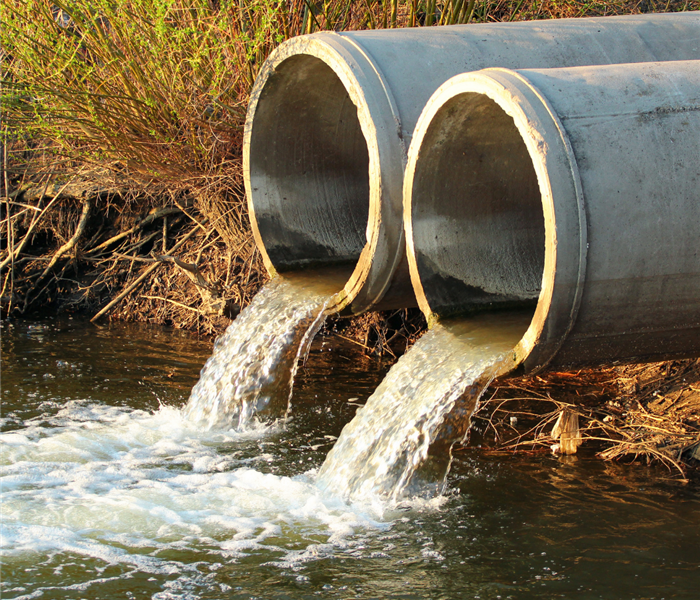 Black Water is not something you want to handle on your own. Make sure you call in professionals to ensure it is fully and safely dealt with.
Black Water is not something you want to handle on your own. Make sure you call in professionals to ensure it is fully and safely dealt with.
When a flood takes place, our team of highly trained technicians examines the characteristics of the affected area to determine what category or how severe the water damage is. Category 3, or Black Water as its also known, is the worst and most damaging as this water is considered hazardous.
Black Water or Cat 3 Water is defined as commonly defined as water originating from sewage, but really is any water that harmful chemicals and/or bacteria.
- How do we restore damage from Black Water?
If your property is affected by black water, it is extremely important to let trained experts handle the restoration of the space. Because of the extremely contaminated nature of Cat 3, specific quarantine and safety protocols are used to ensure full sanitization and restoration of the affected area.
When a disaster strikes, SERVPRO® is there to clean up the mess. Call SERVPRO® of Downey, Montebello, Compton, Vernon for your disaster recovery needs. From Fire and Water Damage to sanitization, we are there to assist you. Call us at: (562) 392-3007
Sewage Backup Causes
12/13/2021 (Permalink)
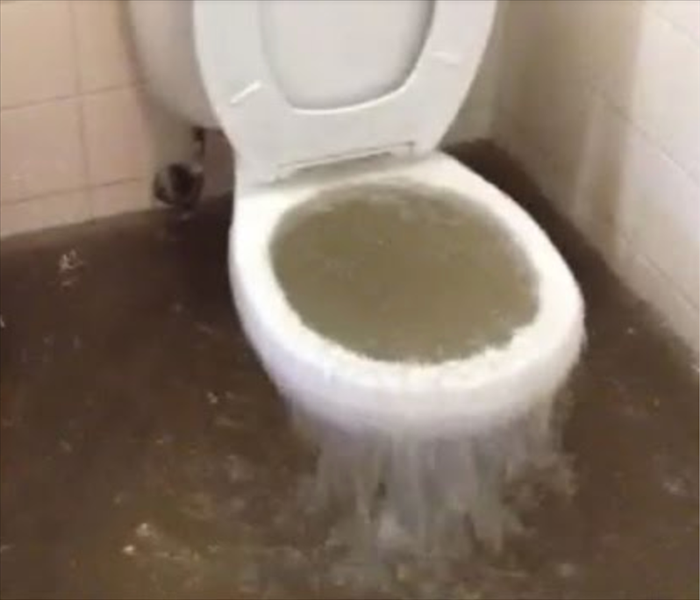 If your home or business experiences a sewage backup, call us to make it "Like it never even happened."
If your home or business experiences a sewage backup, call us to make it "Like it never even happened."
Sewage backups can be an extremely devastating event that can happen to just about any home or business. What are some of the causes of a sewage backup? There are three main reasons that you may experience a sewage backup: damaged sewer pipes, clogs, and tree roots in the sewer system. Let's take a deeper look at these areas.
Usually, if you only have a singular trouble area that experiences a backup, like a tub or a sink, then it is most likely a clog and can be fixed by cleaning the drain. However, if all drains in your home are backed up, then there is a blockage at the main that is causing the issue. Unless the blockage is removed, the overflow will continue and will cause extensive damage to your entire home or business area.
The roots of large trees in the proximity of a sewer line can often cause severe problems. They can grow into the pipes and cause holes and blockages or they may wrap around the sewer line and crush it.
Older properties with older sewer lines that have not been upgraded can have broken or collapsed lines. All the pipes and sewers in older homes were built using cast iron and clay which can wear off with time, get rusty, and easily break down. Present-day plastic sewer lines cannot cause such problems simply because they don’t rust.
Sewage backups are not only hazardous to your health, but they can cause a great amount of structural damage to your home. If you experience a sewage back up do not attempt to flush the toilet. Do not use harsh chemicals to attempt to clean out the drain. This can actually cause more damage and make things worse. Open your windows to let fresh air in. It is also very important to keep pets and children away from the affected area. However, the most important thing to do is to call for professional help.
SERVPRO of Downey is here to help with all your water damage needs. We are open 24/7 365 days a year to help you get back to normal. Call us at (562) 392-3007
9 Reasons NOT to Use Bleach to Kill Mold
11/23/2021 (Permalink)
The use of Bleach as an all-purpose cleaning agent has been widely distributed by DIY blogs and even notable websites such as Huffington Post. This is especially true when it comes to cleaning Mold.
The truth of the matter is that using chlorine bleach may cause more damage than good.
The Occupational Safety and Health Administration (OSHA) as well as the Environmental Protection Agency (EPA), recommends NOT using bleach to kill mold.
Here are 9 Reasons NOT to Use Bleach to Kill Mold:
1. Bleach introduces excess moisture on porous surfaces. A Bleach cleaning solution can contain up to 90% water. Chlorine quickly evaporates leaving the water that soaks into porous surfaces like wood. This encourages mold growth.
2. Bleach will not kill the roots or hyphae. On a porous surface, bleach will wipe away the visible mold, but will not penetrate the many roots caused by the mold.
3. The EPA and OSHA specifically advise against using bleach for mold remediation. High-level organizations focused on public health & safety set the standard for not using bleach as a mold cleaning agent.
4. Bleach is harmful and corrosive. Bleach will weaken wood and metal, breaking down the fibers and corroding metal.
5. Bleach is an irritant. Bleach releases chlorine gas, causing damage to skin, eyes, lungs, and even clothing.
6. When mixed, bleach can be deadly. Mixing bleach with other cleaners or acids can release deadly gases that can kill if inhaled.
7. Inactivation by Organic Matter. Bleach quickly loses its strength after being exposed to heat or light. Because of that, it doesn't prevent future microbial growth.
8. Most bleach products are not on the EPA Approved List of antimicrobial agents. This list features cleaning agents approved for commercial or residential use.
9. Approved antimicrobial alternatives are readily available. These agents are specifically designed to kill mold and prevent microbial growth. They tend to be cost-effective, safe, and easy to use.
Mold is not a DIY job. If you suspect mold at your Southern California commercial or residential property, SERVPRO® of Downey is works to remediate mold from the source. Call us, (562) 392-3007
SERVPRO® of Downey, Montebello, Compton, Vernon are your Mold Professionals. Call us to schedule an appointment, (562) 392-3007
The Art of Drying | Air Movers
8/13/2021 (Permalink)
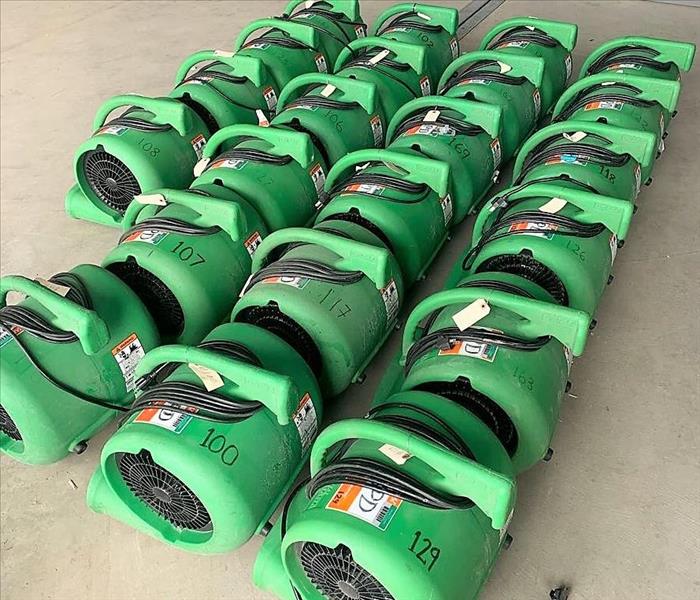 Many air movers are needed on commercial projects that require a large amount of air flow.
Many air movers are needed on commercial projects that require a large amount of air flow.
Air movers are the backbone of the restoration industry.
Air Movers are specialized, industrial fans. They come in different sizes for different drying system set-ups. One thing they all have in common is that they move & push air around wet materials. The result of that moving air allows the wet areas to dry.
Air Movers are crucial to the drying process of any job. More fans don't necessarily mean faster drying. These fans are mean to be placed strategically for optimal drying. These set-ups allow for the air to flow freely around and through wet areas. Though they don't tend to work alone.
Dehumidifiers carry a heavy responsibility on the job site by removing any moisture in a room. Why does moisture need to be removed? Where does the moisture go? Those questions will be answered in a future post.
SERVPRO® of Downey, Montebello, Compton, Vernon is here to help with all your water damage needs. We are open 24/7, 365 days a year to help you get back to normal. Call us at (562) 392-3007
Does Your Heater Smell?
1/26/2021 (Permalink)
As temperatures cool down, you may be turning up your heat. You may use the heat rarely, but have you ever noticed a funny smell when you turn your heater on?
If you have, you're not the only one. In fact, it's quite common. But you shouldn't ignore it. Depending on the type of smell, there might be a fairly easy solution or a real problem. What does your heater smell like?
Does it Smell Damp or Dusty?
That's normal. Dust and dirt will collect in the ducts over time. When the heat kicks in, the dust can release a smell when it gets blown through the house. If the smell lingers after multiple uses a new filter may be needed.
Does it Smell like Oil or Smoke?
This can be serious problem. Oil may be leaking, that's only if you have an oil furnace. Such a leak may put you at risk for fire damage.
Does it Smell Musty?
A musty smell could signify Mold, either in the unit or filter itself. Inspect, Clean, and Replace as needed to protect your home from Mold.
Does it Smell like Burning Plastic or Electrical?
An object may be in the duct that is overheating and causing the smell. It could entail something much more serious like the units motor overheating. Contact an experienced technician to inspect the electrical of your unit to insure it's working properly.
The next time you smell that "funny" smell, don't ignore it. Call SERVPRO® of Downey to inspect (562) 392-3007
Faster to Any Disaster: Commercial Water Damage
1/21/2021 (Permalink)
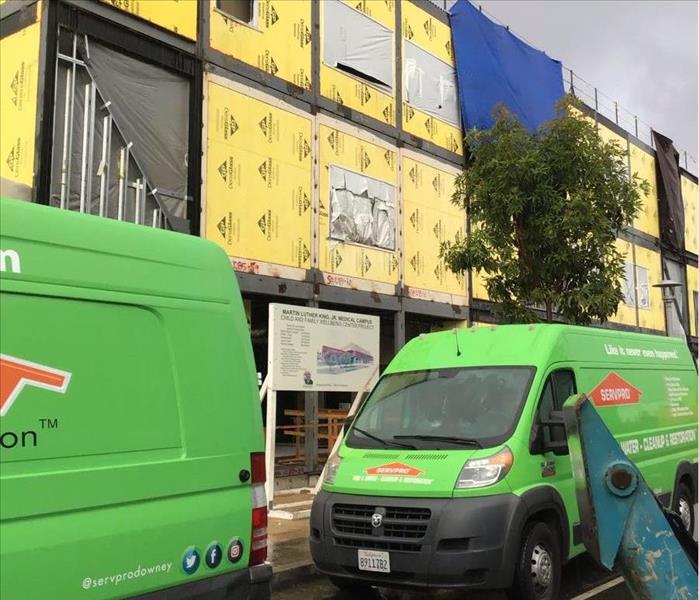 Fast Service - Provided by SERVPRO® of Downey
(562) 392-3007
Fast Service - Provided by SERVPRO® of Downey
(562) 392-3007
Emergency Water Damage
This construction site suffered a widespread emergency water damage. While the construction was well on it's way, so was the rain. The roof wasn't reinforced yet, and the tarping was minimal. Was it enough for the heavy storm that was on its way?
That night heavy rain came and wrecked havoc on the construction site. The next morning, workers showed up to find their whole site flooded, along with tools and supplies. There was only one company to call, SERVPRO® of Downey.
SERVPRO® On-Site!
We mobilized fast! Workers were on-site to reinforce the roof tarping for future rain and to clear our any standing water from the facility. After some days, the whole site was tarped and filled with specialty drying equipment to ensure a dry construction site.
Can SERVPRO® Help You?
The job was massive, but took place smoothly. Does your facility need emergency services? Call SERVPRO®, we're here to help with restoration, remediation, and sanitation.
Call Us: (562) 392-3007
3 Common Water Issues in Commercial Buildings
1/4/2021 (Permalink)
Commercial buildings are a maze of supply pipes and drains. A lot of pipes mean a lot of water. Water lines and sprinkler heads of the fire suppression system add more water to the picture. Leaking pipes are everyday occurrences. The occasional flood or pipe break happens. The only surprise comes when the plumbers run out of problems to fix. Following are the three most common problems faced in commercial plumbing.
- Small Nuisance Problems
These problems have quick and easy fixes. Dripping faucets and leaking pipes are commonplace in restroom and kitchen areas. Fixing these problems saves water and eliminates the hazards associated with wet floors. Small repairs like this provide plumbers the opportunity to inspect the surrounding plumbing and fixtures. Not every plumbing problem gets reported.
- Toilet Problems
Toilet design is all about performing the flush using the least possible amount of water. It takes a delicate balance of water volume and pressure for a successful flush. When conditions aren’t correct, the result is a toilet backup. Some problem toilets frequently block. They may need a new flush valve or total replacement.
- Blocked, Slow and Foul-Smelling Drain Problems
Blocked drains can shut down a sink, room or plumbing zone. A slow drain provides a warning that it will eventually stop completely. Plumbers know that drain-flow problems require prompt attention.
Drain odors from a sink may mean that the trap is dry. A dry trap allows smells and sewer gas to leak into the building. Traps attached to floor drains can dry out as well. Pouring water down the drain is a simple fix for dry traps. If the odor problem persists, it becomes a problem for the custodial staff to handle.
Leaking pipes can cause a flood. The subsequent water damage and the risk of mold are a threat to your business.
SERVPRO of Downey is here to help with all your water damage needs. Call us at (562) 392-3007
Mold: Remediation or Restoration?
1/4/2021 (Permalink)
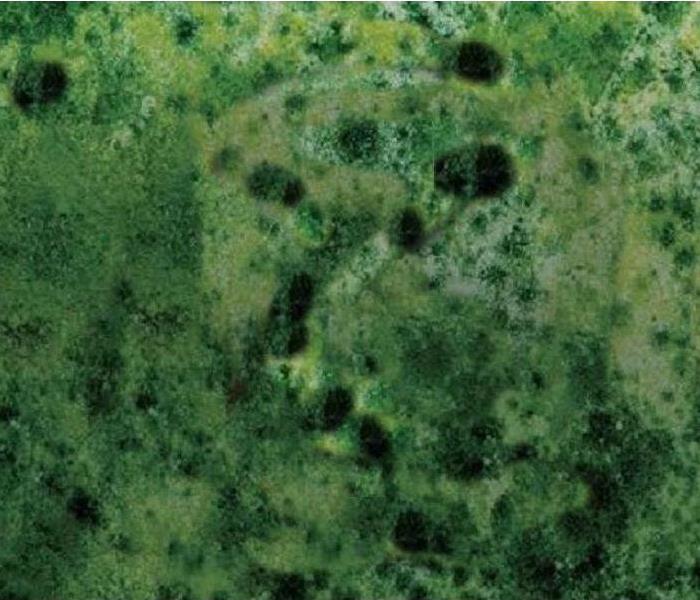 Does mold need to be remediated or restored?
Does mold need to be remediated or restored?
Our specialty at SERVPRO is Remediation and Restoration. What's the difference between the two?
Remediation: The act of stopping or reversing environmental damage.
Restoration: To return something to its former condition.
How does mold play into situation?
Mold is most likely to grow where there is moisture and humidity. That means, after you've suffered a water damage the chance of mold growth is highly likely. Mold may begin to grow and spread in as little as 40hrs after a water damage.
Is mold remediated or restored?
Mold is remediated. The first step is to clear out any traces of the water damage if one occurred. Next, a containment will be set up so mold growth is contained. After that, a cleansing of the air must take place. Various air units will be placed to filter the air and mold spores that might be present throughout. Lastly all mold affected materials will be removed.
Don't let the media scare you. The mold removal process should only be done by professionals. Call SERVPRO of Downey with any questions: (562) 392-3007
Water Damage Emergency Do's and Don'ts
12/22/2020 (Permalink)
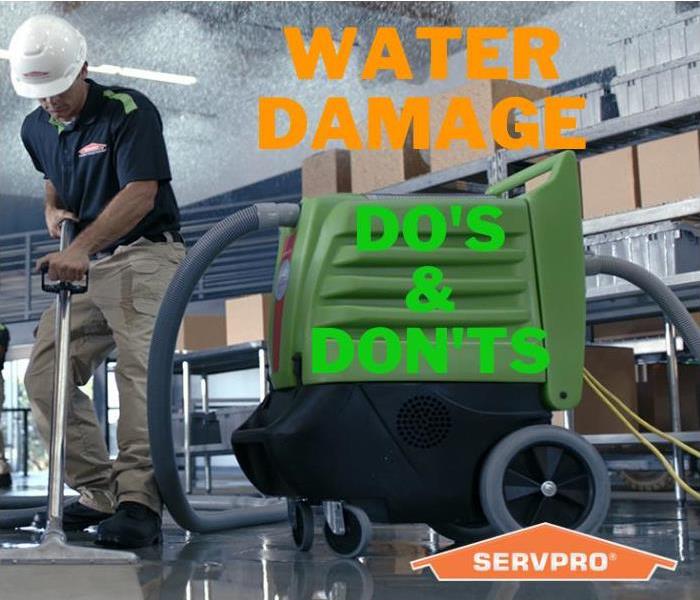 Contact SERVPRO® of Downey for your Water Damage needs: 1-800-700-SERV
Contact SERVPRO® of Downey for your Water Damage needs: 1-800-700-SERV
From a Clean Water Source
DO:
- Shut off the source of the water if possible or contact a qualified party to stop the water.
- Turn off circuit breakers for wet areas of the building, when access to the power distribution panel is safe from electrical shock.
- Remove as much excess water as possible by mopping and blotting.
- Wipe excess water from wood furniture after removing lamps and tabletop items.
- Remove and prop up wet upholstery cushions for even drying.
- Place aluminum foil or wood blocks between furniture legs and wet carpeting.
- Remove any paintings, art objects, computers, documents and other materials that are valuable or sensitive to moisture.
DON’T:
- Enter rooms with standing water where electrical hazards may exist.
- Enter affected areas if electrical outlets, switches, circuit breakers or electrical equipment are exposed to water.
- Leave books, newspapers, magazines or other colored items on wet carpets to cause staining.
- Use your household vacuum cleaner to remove water, possibly causing electrical shock or damage to the vacuum cleaner.
- Use TVs or other appliances while standing on wet carpets or floors, especially not on wet concrete floors.
- Turn on ceiling fixtures if ceiling is wet or enter rooms where ceilings are sagging from retained water.
From Contaminated Water Source
DO:
- Avoid all contact with sewage and items contaminated by sewage.
- If exposed to harmful waste, OSHA recommends a post-exposure medical evaluation. Consult your local health department or physician.
DON’T:
- Turn on the HVAC system if there is a possibility of spreading contaminated air.
- Use household fans to dry the structure and spread contaminants.
From Harmful Waste
DO:
- Stay out of affected areas.
- Call emergency service personnel if the situation is life-threatening.
DON’T:
- Attempt cleanup of any kind.
- Touch or handle items that might be contaminated with bodily fluids.
Prepare Your Business for a Water Damage
8/10/2020 (Permalink)
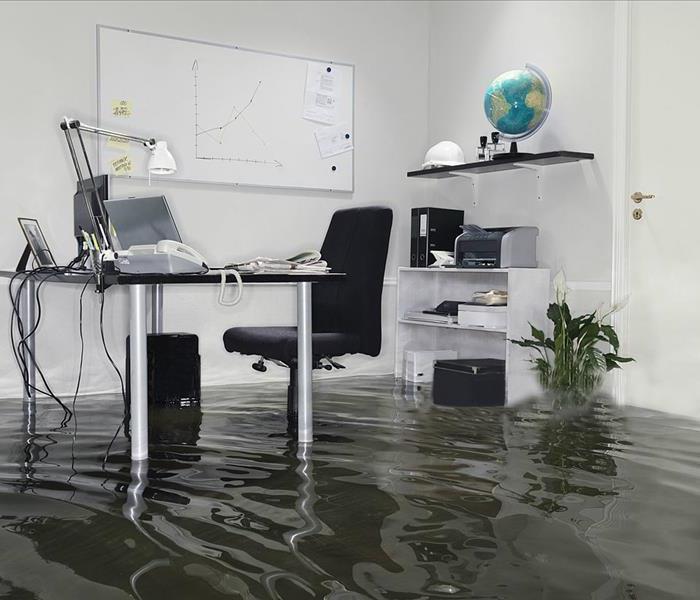 Is your business prepared for water damage?
Is your business prepared for water damage?
Water damages happen, it's okay. That's why we're here. We’ve learned that most customers aren’t sure how to navigate the cleanup and restoration process. Here are some steps you need to take if water damage strikes your business!
- Address the Source. If you know the cause of the damage, address that first. This may require calling a plumber, but if you don’t know the source of the damage, then you can skip to the next step.
- Call SERVPRO®. We're going to assess the water damage and begin the cleanup and restoration process. If you haven’t identified the cause of the damage yet, we will help you determine that and provide you with the next steps.
- Contact Insurance Company. Consider calling your local agent and making a claim. Disasters can be costly, so if you’re covered, your insurance can drastically reduce your out-of-pocket expenses!
Water damage can be stressful. We want to help you navigate this process as smoothly as possible.
For more information on water damage situations call SERVPRO® of Downey: (562) 392-3007
The Science of Drying
1/24/2020 (Permalink)
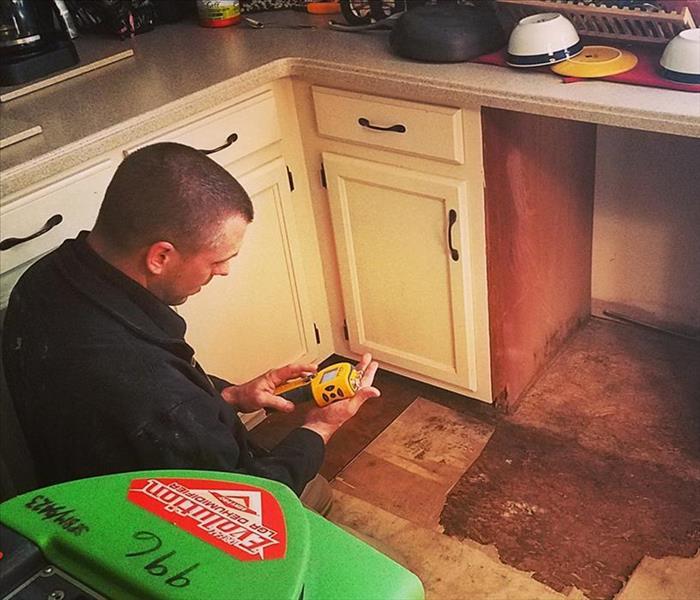 Does your mitigation company know about the science of drying?
Does your mitigation company know about the science of drying?
Did you know there is actually a science behind the process of drying?
The knowledge of psychrometrics is essential to restoring a water damaged structure to its preloss condition. While your initial reaction may be to grab a few towels to mop up the mess and place a fan or two around the damaged area, SERVPRO of Downey is trained in the science of drying and follow strict industry-approved standards to help prevent further damage
If your business suffers a water damage, SERVPRO of Downey will:
- Inspect the building to detect every component that is wet, to help prevent secondary damage from happening.
- Measure how much moisture is in wet materials and monitor whether the materials are drying properly.
- Use professional drying equipment.
A wet building can often dry naturally because the environment always seeks equilibrium. When materials are wet, moisture will naturally move to drier air at the surface of the material–but only if the air is, indeed, drier. The only problem is, nature often takes too long and secondary damages may occur while the building is drying out. For this reason, SERVPRO of Downey has been trained to use top-of-the-line equipment to help move your loss forward, including equipment to help dry hardwood floors, tough-to-reach spaces inside walls, and much more.
DRYBOOK™ DOCUMENTATION
SERVPRO of Downey uses the latest technology to help ensure your property is dried quickly and efficiently. DryBook™ is a proprietary tool that:
- Manages industry drying requirements. n Provides real-time documentation on the drying process.
- Validates that services are executed to standard.
- Reports to all stakeholders involved.
- Allows real-time updates through DryBook™ Mobile integration. This improves results and restores your property at a faster rate, getting you back in your home or business sooner.
SERVPRO® uses state-of-the-art
monitoring equipment and a proven scientific process to help speed the drying of your home or business.
The bottom line? SERVPRO of Downey has the training and equipment to help make it “Like it never even happened.”
Have Questions? Call Us Today –(562) 392-3007
Choosing A Fire Extinguisher
1/21/2020 (Permalink)
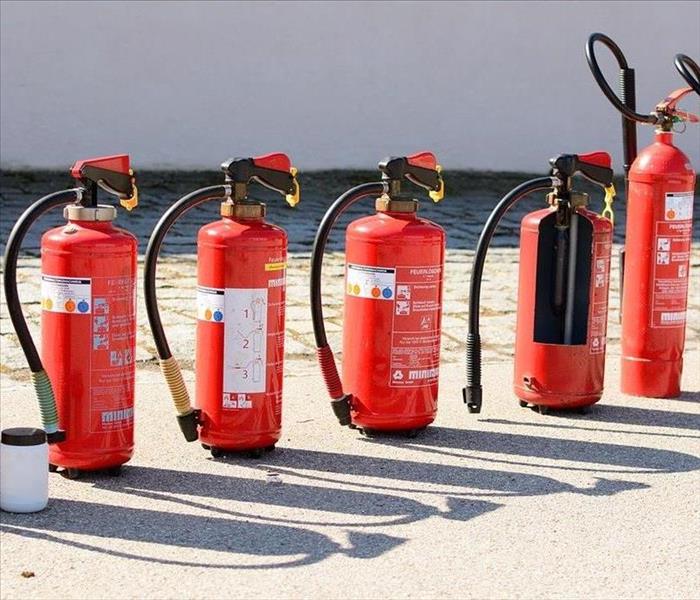 Do you know what fire extinguisher you have?
Do you know what fire extinguisher you have?
Did you know there are five different types of fire extinguishers and that each type is designed for different types of fire? Whether for your home or business, it’s important to have the correct type of fire extinguisher available.
Class A: This is the most common fire extinguisher. It can be used to put out fires in ordinary combustibles such as cloth, wood, rubber, paper and many plastics.
Class B: This type of fire extinguisher is used on fires involving flammable liquids, such as grease, gasoline or oil.
Class C: These fire extinguishers are designed for fires involving appliances, tools, or other equipment electrically energized or plugged in.
Class D: These fire extinguishers are for use on flammable metals, and are typically found only in factories that work with flammable metals.
Class K: This type of fire extinguisher is intended for use on fires that involve vegetable oils, animal oils or fats in cooking appliances. Class K fire extinguishers are generally found in commercial kitchens, but are becoming more popular for use in home kitchens.
Multi-Use: There are fire extinguishers available that are able to be used on several different types of fires. A combination of Classes A, B and C is a common multi-use fire extinguisher.
4 Steps If Water Is Leaking From a Ceiling Light
1/3/2020 (Permalink)
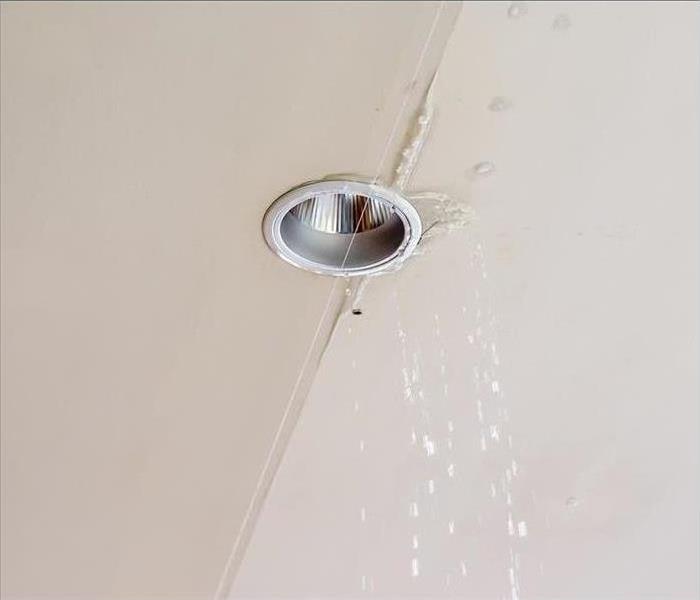 Never touch the light fixture or a light switch, and keep everyone as far away as possible from the leak.
Never touch the light fixture or a light switch, and keep everyone as far away as possible from the leak.
4 Steps If Water Is Leaking From a Ceiling Light
Discovering water in light fixtures on the ceiling is an especially hazardous situation and one that needs to be handled with great care. Act quickly and cautiously to prevent damage to your Downey home and keep everyone inside safe. Follow these four steps:
1. Turn Off Electricity
One of the main dangers of water leaking from a ceiling light is the possibility of electrocution or an electrical fire starting. Never touch the light fixture or a light switch, and keep everyone as far away as possible from the leak. Next, find the main breaker box for your home and shut off the electricity.
2. Shut Off Water
Heavy leaking from water in light fixtures can cause extensive water damage to your home. You want to prevent even more water from entering your home by turning off your home’s main water supply.
3. Address the Leak
You can place a bucket or towels under the drip to help soak up some of the water and prevent more damage from occurring. The leak can be caused by a ceiling pipe or even a leaking toilet or bathtub. If the water is coming from a source upstairs, address the leak if possible and clean any standing water.
4. Call the Experts at SERVPRO®
You will need the help of a water damage restoration company to address any damage that occurred to your home. Contact a specialist right away to prevent the situation from getting worse.
Discovering water in light fixtures requires immediate and careful action. Remember to make everyone’s safety a priority, and don’t hesitate to get to help.
2019: The Highlights
12/27/2019 (Permalink)
2019 was certainly a year to remember, and a year that seemed to have gone by in a flash.
Records were Broken
We saw weather fluctuate like never before. Due to that, more than 120,000 weather records were broken, from snowfall in Hawaii to a heatwave in Alaska.
California Went Up in Flames
We thought 2018 was a bad year for Wildfires, turns out 2019 had something much bigger in store. Over 253,321 acres were burned, with some 6,872 Wildfire incidents. Most notably was the Kincade Fire, Tick Fire, & Saddle Ridge Fire.
California Cracked
One of the strongest earthquakes in 20 years hit over near Ridgecrest. That was followed by an even bigger quake coming in hot at 7.1. Over 100,000 aftershocks riddled the area over the next couple weeks.
It has been a record breaking year. Sadly, these records came at the cost of displacing many families due to fires and other disasters. It's the end of a decade, let's not be separated by others differences but come together for our communities during these unexpected disasters. Here's to 2020!
How Fire Sprinklers Benefit Your Commercial Building
12/19/2019 (Permalink)
The last thing a business owner wants is a Fire at his commercial property. Commercial fires can lead to injury or death of employees, damaged merchandise and equipment, lost records, and possibly, the permanent closure of the business.
To improve fire safety in the workplace, a fire sprinklers of any kind are crucial for commercial buildings and the safety of those inside.
Are there requirements for commercial buildings and the fire sprinklers that are installed? Fireline.com outlines sprinkler system requirements on their website for business owners.
According to the website, here are some of the requirements of the National Fire Protection Association for commercial sprinkler systems:
- Buildings more than 55 feet high must have sprinkler systems.
- Any new building with a fire area of more than 5000 square feet must have sprinklers.
- Fire pumps should be installed to increase the amount of pressure in a single sprinkler system.
- Fire pumps should be housed in a separate building whenever possible.
- Water supply control valves should be accessible for easy operation.
There is never a convenient time for a fire disaster to strike a business. But SERVPRO of Downey understands that in the event of a fire, it is important to provide excellent service while minimizing the disruption to the daily operations of the business. We are always here to help in the event of a commercial fire. Learn more about our expert commercial restoration services.
How to Limit Toilet Overflow Damage
8/5/2019 (Permalink)
No one wants to deal with a flooded toilet. If you experience a toilet overflow at your Downey home, immediate steps should be taken.
- Contact a plumber upon noticing signs of a blocked drain line and take measures to limit sewer damage.
- Contact SERVPRO® to help mitigate and clean the water overflow.
Contaminated Water
Toilet water is usually contaminated water. Restoration professionals categorize water damage into three categories:
- Category 1: clean water, originating from supply lines
- Category 2: contaminated water, from showers or appliances
- Category 3: contaminated water containing solid waste
Water from a flooded toilet is likely either Category 2 or 3. Disinfection is needed for both categories due to the contaminated water present.
Damaged Building Materials
Porous materials such as carpet or drywall cannot be completely disinfected, and may pose a continued risk of microbial growth. Mitigation experts usually recommend tearing out these materials prior to disinfecting and drying the area.
Secondary Damage Risks
The more time that passes, the more chance of secondary damage occurring. The most common forms of additional damage are:
The faster the damage is addressed the less likely further damage can occur.
If you are not sure how to handle sewer damage, don't panic. Call SERVPRO® of Downey -(562) 392-3007
Top 3 Places to Find Water Damage
1/28/2019 (Permalink)
Take this scenario: You come home from a long day at work. You make yourself some dinner, relax a bit, and enjoy the rest of the evening. It's now 10pm and you decide to go downstairs to get some water before bed.
Let me tell you...You got water alright.
You turn on the lights and your kitchen is soaked! The culprit? Your dishwasher. With all the water running from your sink and dishwasher your kitchen becomes a popular location for water damage. Where are other popular places to find water damage?
- Roof: Your roof is a huge protection to your home from the outside elements. The slightest damage to your roof can leave you exposed to internal damage. If you have multi-story home, damage can penetrate not only the 2nd floor but the 1st one too.
What can you do? Have your roof inspected by a professional on a regular basis. About every 3-5yrs depending on the age of your roof and the elements it's exposed to like, rain, hail, or snow.
2. Bathroom: This room, much like the kitchen, has allot of water running through it as well. You have your sink, toilet, and shower. But unlike the kitchen, Black Water aka Sewage Water, can be a real mess.
What can you do? Inspect around your shower & toilet. Look for leaks in the caulking or moisture spots. Under the sink, check the pipes. Make sure they are all tightened.
3. Kitchen: As was stated, Kitchens are notorious for water damage. Your Dishwasher, Sink, & Refrigerator can be time bombs waiting to burst.
What can you do? Check your pipes under the sink, much like your bathroom. If your refrigerator/freezer has a Water & Ice dispenser, check under the fridge for leaking water. As for your Dishwasher, check the escape valve that connects to your garbage disposal. When all the water leaves the dishwasher, it escapes to that valve.
Water Damage doesn't discriminate, it can happen to anyone & at anytime. In fact, the scenario mentioned at the outset happened to one of our own employees. If you find yourself in a similar scenario, SERVPRO® of Downey is just a phone call away from assisting you.
Water Remediation: Where Problems Arise
1/28/2019 (Permalink)
Having a water damage is a difficult thing to go through. The damage to your home & belongings can bring stress on any homeowner. You want your home back to normal as fast as possible, that's our job as a water remediation company. But when other water remediation companies don't effectively perform their services, the work can get prolonged.
Here's some examples of the most overlooked areas:
1. Moisture Mapping
Water can spread everywhere. Remediation companies come to track it to see where exactly they need to dry. However, when a company fails to locate all the wet areas, that moisture can still cause further damage. A thorough inspection and detailed moisture map will ensure all areas are documented for drying.
2. Drying Time
All areas can be documented, but if the area wasn't dried for the proper amount of time your water damage will still linger. Ensuring the area is completely dried can save damage to your home now and in the future.
3. Improper Drying
Even with all the moisture properly documented and dried for the given amount of days, issues can still occur if improper drying methods are used. Examples include when drying equipment isn't properly placed, when the equipment gets shut off, or when common household fans are used.
-
The remediation and drying process is a real science. Ensure you hire a company that's properly trained and certified to provide you with the best services for you and your home.
Notice the Unnoticeable
1/3/2019 (Permalink)
Water damage isn't always noticeable to the naked eye. In fact, it's usually quite sneaky and is found in the most innocent of places. Though sneaky and almost unnoticeable it may be, it can cause massive amounts of damage.
Make it a habit to check these trouble spots for leaks. These trouble spots tend to be hoses. These hoses are connected to your Washing Machine, Ice Maker, and Dishwasher.
Most hoses are rubber, which deteriorates with age. A crack in the hose or rupture can spill gallons of water in a very short time. Take time to inspect these hoses for wear signs.
Proper Maintenance includes:
- Making sure hoses are tightly secured.
- Use Teflon tape to ensure a water-sealed connection.
- Use a Zip-Tie or Duct Tape as extra security for your discharge hose.
- A Drip Pan might be installed under your Washing Machine to catch any leaks before it hits the ground.
Stop the water before it causes damage. Take the necessary action to prevent it as soon as possible. SERVPRO® of Downey is here to help if it's too late.
What is Category 3 Flooding?
11/1/2018 (Permalink)
It is a fact that life on this planet would not exist without water. We drink, cook, bathe, and wash with it. Water makes our food grow. Needless to say,We Need Water!
However, there is another aspect of water we need to consider…Too much of it in the wrong place.Too much rain in a short period of time will bring flooding, this can be devastating.
Flood waters contain Bacteria, Mircoorganisms, and possibly Raw Sewage. Water of this type is known as Category 3 or Black Water…It’s effects can be deadly.
It may surprise you, but large portions of L.A and Orange counties are in flood plains. It is possible we could be dealing with this problem. The procedures are outlined in this link, please read and review it with your staff or family.
Our business, hospital, municipality, school district or home could be affected. Consider the possibilities now and prepare. Understanding what water can do, will help us contend with its effects.
4 Steps to Minimize Your Water Damage
11/1/2018 (Permalink)
Unexpected things happen and we've all experienced something unexpected sometime or another. In the same vein, water damage happens. It's not a matter of If, but When. We all need to be prepared when it does strike. Follow these 4 steps and lessen the damage of water.
Cut Off the Source:
Take for example a toilet overflowing. You come home to find water all over the bathroom. The first thing you may want to do is clean it up, but we'll get to that part later. Shut the water off to the toilet first. Now, no more water can cause damage. If the source isn't an appliance like a toilet, find the shut off valve to the house and turn that off.
Preserve Your Home:
Now, if the extent of the water is small enough, you can proceed to clean up the water. Rags, mops, & buckets will be useful. You may need to move around furniture to prevent damage. Sewage water should be left alone to prevent further contamination to other parts of the home.
Contact Remediation Company:
Water often causes unseen problems like Mold. To the naked eye we may have dried and cleaned everything. However, under the surface various materials can still be wet. Whether the extent of the water was minor or major, contact a Water Remediation Company. The situation can be assessed by professionals and tested with specialized technology.
Do Not Panic:
Lastly, don't panic. It may be hardest thing to do on this list, which is understandable. Panicking may cause us to make decisions we might regret. We don't want to remove any flooring or carpeting. When all seems lost, professional restoration experts can restore items such as flooring and carpet. If walls are opened, possible exposure to lead and/or asbestos could result.
-
Water damage happens, don't be caught off guard when it does. Follow these 4 steps to help minimize the damage and help ease the restoration process.
SERVPRO® Technology: Air Movers
8/2/2018 (Permalink)
What are Air Movers?: Air Movers are specialized fans, industrial fans. They come in different sizes for different drying system uses. One thing they all have in common is that they move or blow air around a job sight. The result of that moving air allows the wet areas to dry.
Why Are They Important?: Air Movers are crucial to the drying process of any job. More fans doesn't necessarily mean faster drying. These fans are placed strategically for optimal drying time. After 3-5 days of constant use, the wet area will be dry.
Though they don't work alone. Dehumidifiers carry a heavy responsibility on the job sight by removing any moisture in a room. A separate post will be available regarding dehumidifiers and their functions.
SERVPRO® Technology: Thermo Hygrometers
5/19/2017 (Permalink)
What Are Thermo Hygrometers: Thermo Hygrometers are about the size of a TV remote. This tool is used to measure Humidity levels in the air. It also reads the temperature.
Why Are They Important: These Humidity levels are important when water damage has occurred. It allows us to see how severe the damage is. The higher the Humidity, the more likely the water in the air will penetrate the walls and ceiling. Humid air feels stuffy and musty.
These Humidity levels are checked each time we monitor a home. The lower the levels tells us it's drying properly.






 24/7 Emergency Service
24/7 Emergency Service




